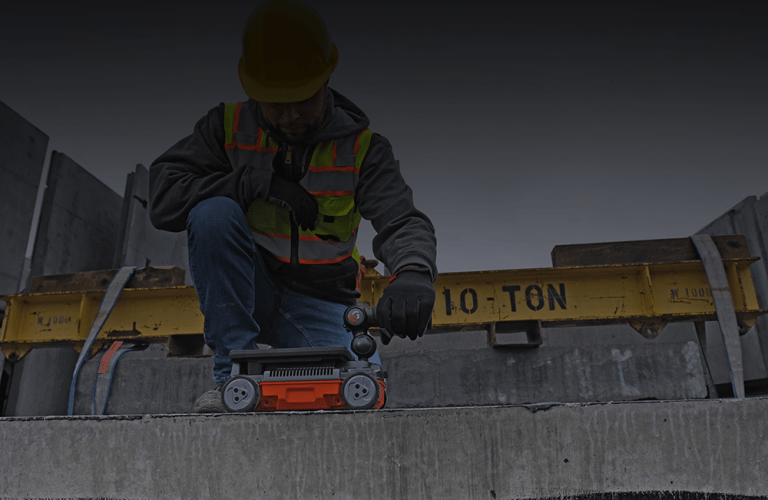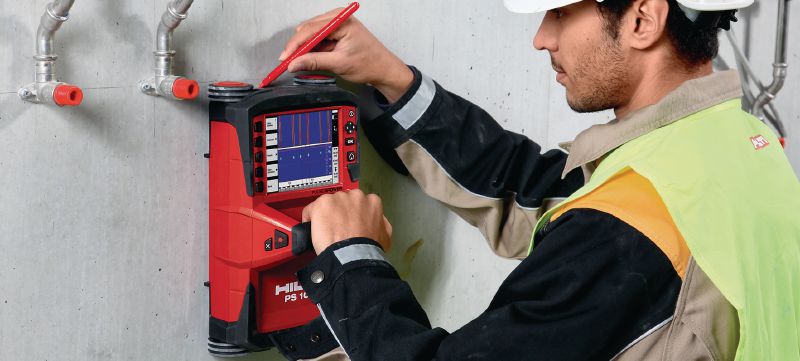RainierGPR Concrete Scanning: Innovative Solutions for Complex Tasks
RainierGPR Concrete Scanning: Innovative Solutions for Complex Tasks
Blog Article
Discovering the Secret Benefits of Concrete Scanning in Building Projects
In the realm of contemporary building methods, the utilization of concrete scanning technology has actually arised as a pivotal device for making certain job efficiency and architectural honesty. From enhancing safety actions to precisely discovering utilities concealed under the surface area, the advantages of concrete scanning are diverse. The capacity to improve task timelines and decrease costs while maintaining existing structures is a testament to the worth this technology offers the building market. As we dig into the nuanced advantages of concrete scanning, it ends up being evident that its impact extends much past surface-level assessments, using a glimpse into the intricate web of benefits waiting to be revealed.
Improved Precaution
Making use of innovative concrete scanning technology boosts safety and security actions on construction sites by providing exact detection of potential threats hidden below the surface. This innovation enables building teams to determine rebar, conduits, post-tension cable televisions, and other obstructions prior to excavation or exploration, significantly decreasing the risk of accidents. By pinpointing these elements precisely, workers can avoid damaging crucial structural parts, hence protecting against injuries, delays, and costly repairs.
In addition, concrete scanning plays an essential function in making sure the stability of existing frameworks throughout restorations or growths. By spotting weak points, spaces, or wear and tear within concrete elements, designers can resolve these problems proactively, enhancing the total security and long life of the structure. This proactive approach not just reduces the risk of architectural failures however likewise lessens the potential for crashes brought on by unforeseen architectural deficiencies.
Essentially, the execution of concrete scanning technology serves as a proactive precaution that safeguards both construction employees and the architectural integrity of buildings, eventually adding to the total success and performance of building tasks. - RainierGPR Concrete Scanning
Accurate Detection of Energies
Concrete scanning modern technology promotes accurate recognition of underground utilities, boosting building website security and performance. Accurate detection of energies is essential in building projects to stop pricey damages, project hold-ups, and most notably, make certain the security of employees and the general public. By utilizing sophisticated scanning modern technologies such as ground-penetrating radar (GPR) and electromagnetic induction, building teams can draw up the area of hidden pipes, cable televisions, and various other energies with high degrees of precision.

Time and Expense Performance

Concrete scanning innovation makes it possible for building and construction teams to precisely locate rebar, post-tension cords, and various other ingrained things within concrete frameworks. This accurate details assists in preventing expensive errors such as unintended damages to crucial elements throughout exploration, cutting, or coring activities. Furthermore, by recognizing potential dangers ahead of time, the demand for costly repairs or rework because of problems can be decreased, leading to cost savings for the project.

Furthermore, the capability to quickly and properly detect utilities below the surface without causing any type of damage not only saves time however likewise protects against pricey disturbances to existing facilities. On the whole, the moment and price performance advantages of concrete scanning make it an important device for boosting building and construction task administration and implementation.
Conservation of Structural Integrity
Protecting the architectural honesty of buildings and facilities is critical in making certain lasting security and security. Concrete scanning plays a vital role in this conservation procedure by enabling construction specialists to recognize possible hazards to the architectural stability of a building or infrastructure prior to they rise into major issues. Through making use of sophisticated scanning modern technologies such as ground-penetrating radar (GPR) and electromagnetic induction, construction teams can non-invasively analyze the problem of concrete frameworks, find rebar, post-tension cable televisions, and various other ingrained elements, and recognize any type of voids, splits, or damage within the concrete.
Improved Job Planning
In order to make certain the effective implementation of building and construction tasks, thorough focus to information and comprehensive planning are important elements that stem from an extensive understanding of the structural conditions identified via concrete This Site scanning. Eventually, integrating concrete scanning into the project planning stage boosts sychronisation among team participants, promotes positive problem-solving, and contributes to the effective shipment of building projects within budget and schedule restrictions.
Verdict
In conclusion, concrete scanning provides countless benefits in construction jobs. By boosting security steps, precisely finding energies, improving time and cost efficiency, preserving structural honesty, and assisting in task planning, concrete scanning verifies to be an important device for successful task execution. Its capability to minimize risks, enhance performance, and guarantee project honesty makes it a vital possession for building experts.
In read more the realm of modern-day construction practices, the use of concrete scanning technology has actually arised as a pivotal device for ensuring job efficiency and structural honesty.Concrete scanning technology makes it possible for construction teams to properly situate rebar, post-tension cables, and other ingrained objects within concrete structures. With the usage of advanced scanning modern technologies such as ground-penetrating radar (GPR) and electromagnetic induction, building and construction groups can non-invasively evaluate the problem of concrete frameworks, locate rebar, post-tension cable televisions, and various other ingrained components, and recognize any spaces, fractures, or deterioration within the concrete.
In order to guarantee the effective implementation of construction projects, careful interest to information and extensive preparation are crucial components that stem from a comprehensive understanding of the structural conditions determined with concrete scanning. Inevitably, incorporating concrete scanning into the project planning phase improves sychronisation among team members, fosters proactive problem-solving, and contributes to the successful delivery of construction projects within budget and schedule constraints.
Report this page